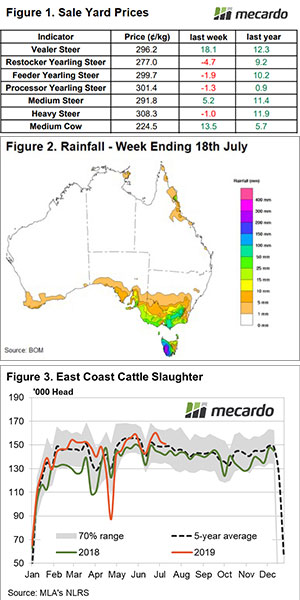
The young cattle price slide continued this week as the lack of rain saw price support dry up further. There were no falls for finished cattle however, as demand continues to respond to rising export cattle prices.
The cattle prices, as represented by the Eastern Young Cattle Indicator (EYCI), spent their fifth week on the slide and hit a new thirteen week low. The EYCI finished Thursday at 477.25¢/kg cwt, having lost 22¢ for the week. Another stat, shown in figure 1, has the EYCI lower than last year’s level for the first time in seven weeks.
Finished cattle prices have maintained their strength. Heavy steers on the east coast are above 540¢ in all states and averaged 573¢, thanks largely to prices being over 600¢ in Victoria.
The east coast trade steer indicator averaged 570¢, while feeders are also strong, at 280¢/kg lwt. Even on the young cattle front, it is only restocker types which are suffering the discount.
Export beef prices continued to creep higher. This week it was thanks to rising values in the US, which hit 223.5US¢/kg swt. It’s not quite a new high, but it has only been half a cent stronger back in April, over the past two years.
Steiner’s weekly report on the North American imported beef market was blaming weaker beef imports from New Zealand for strong 90CL values in the US. Guess where NZ’s beef is going? If you guessed China, you would be right.
Next week?:
Demand for export beef has the 90CL in our terms just 18¢ off an all-time high. It’s little wonder processors are maintaining prices to attract cattle. Cattle markets are now very much a tale of store versus finished. A failing spring is likely to see this continue, as we now look for northern summer rain to kick start the store market again.

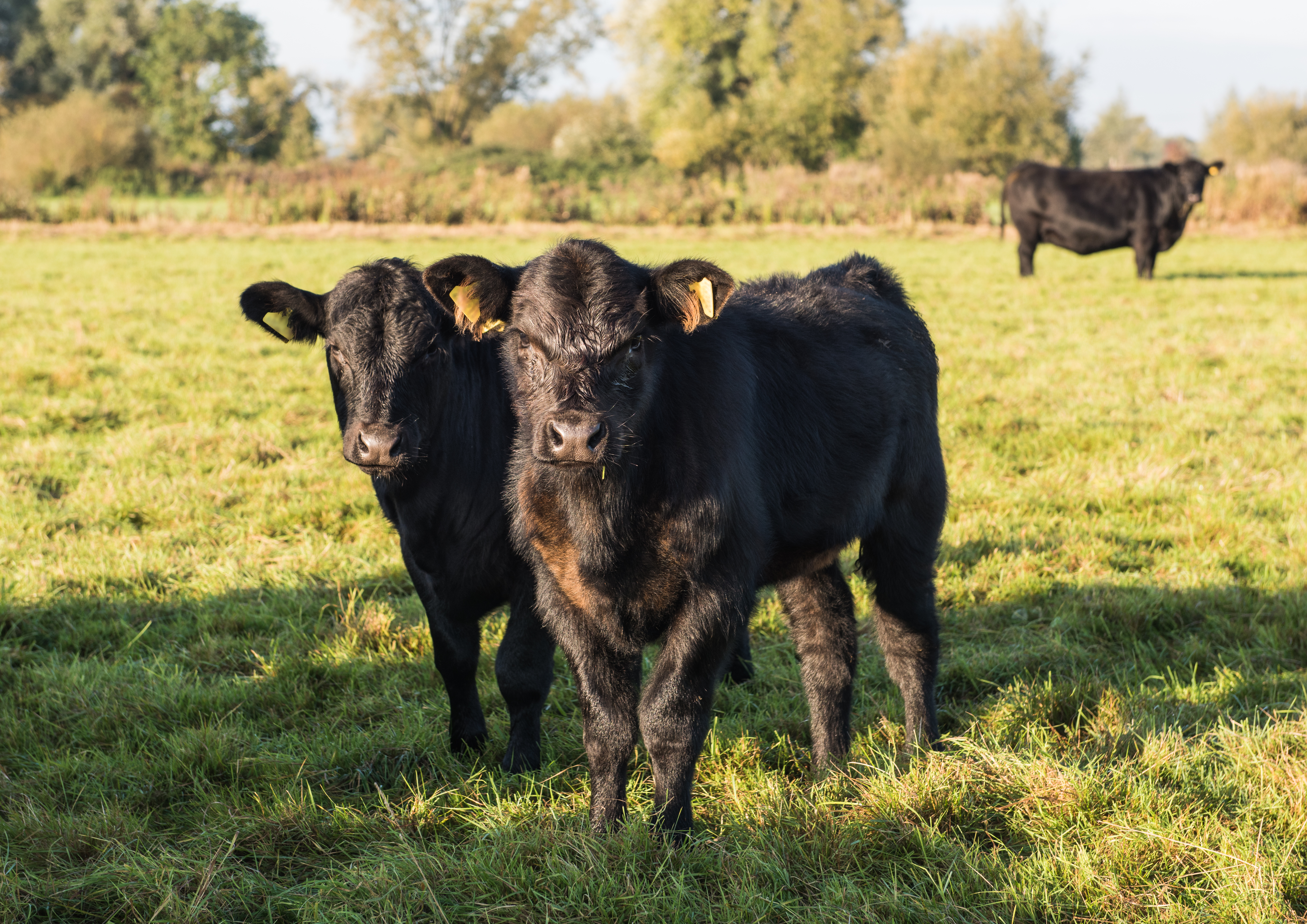
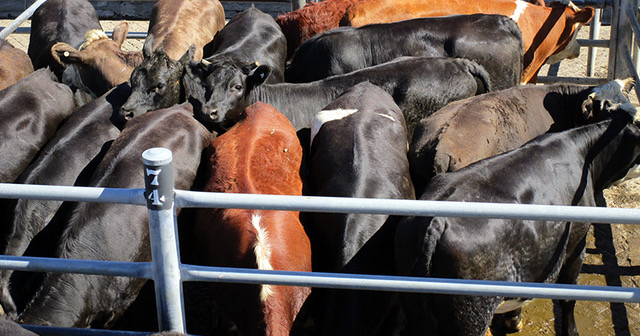
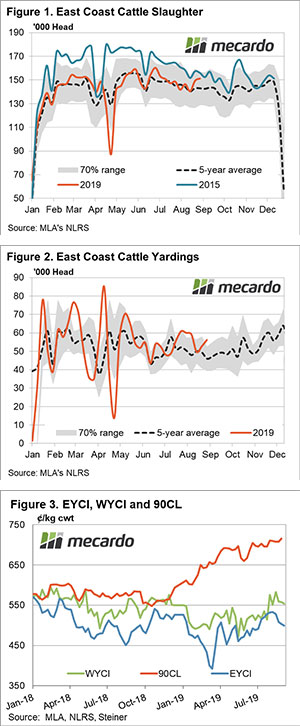
 Despite rising slaughter rates, and more dry weather, the Eastern Young Cattle Indicator (EYCI) managed to find some support at 500¢. The demand from export markets remains rampant, with slaughter cattle prices hitting new peaks.
Despite rising slaughter rates, and more dry weather, the Eastern Young Cattle Indicator (EYCI) managed to find some support at 500¢. The demand from export markets remains rampant, with slaughter cattle prices hitting new peaks.
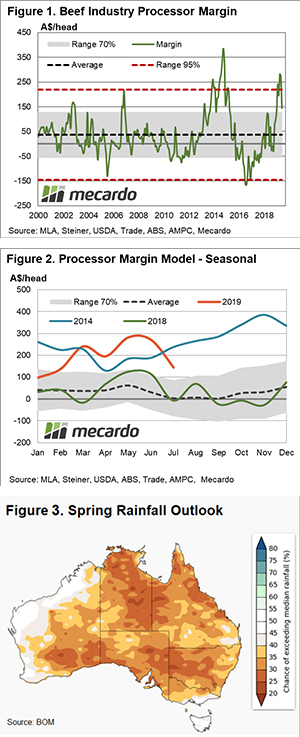
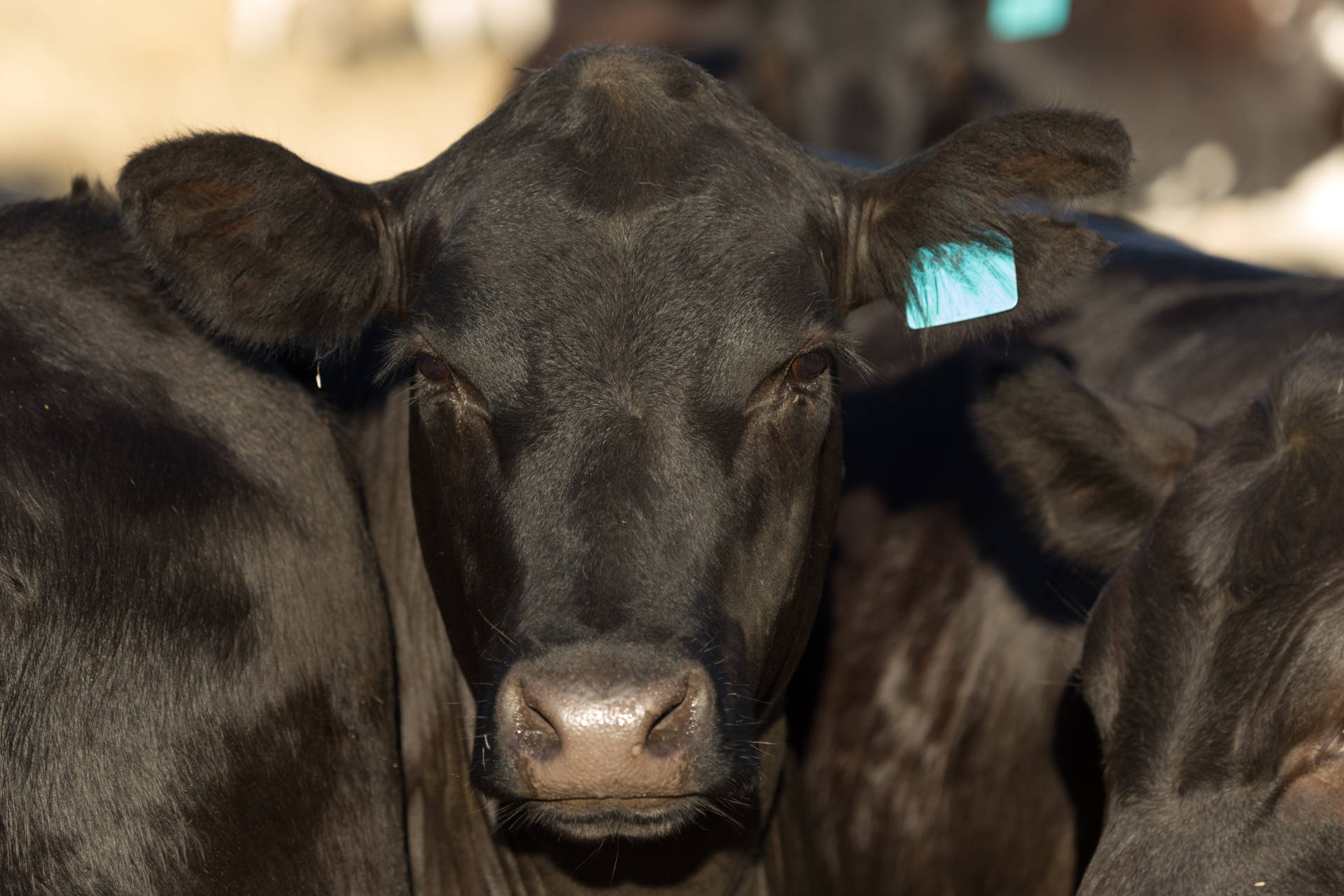
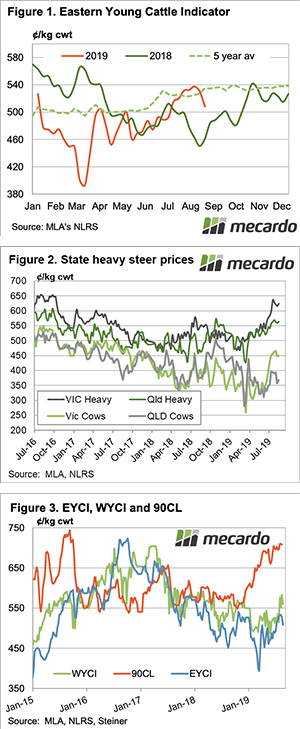
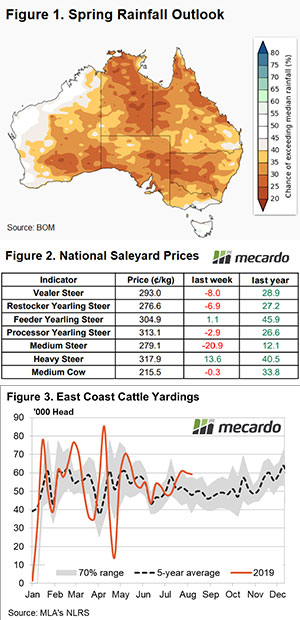

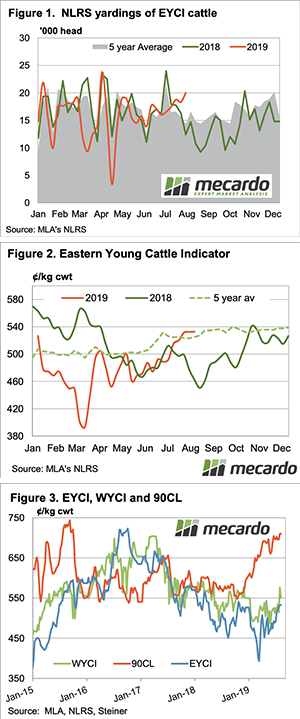
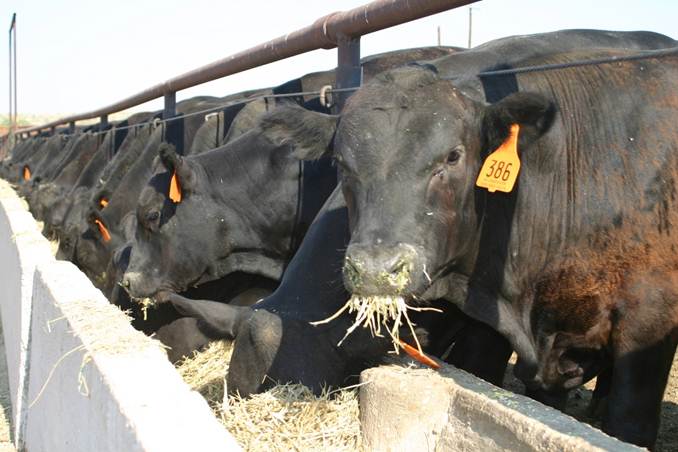
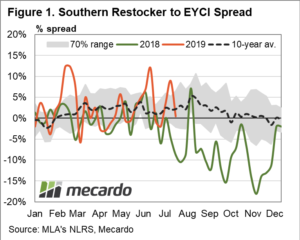 A recent discussion with some livestock industry representatives this week suggested that in the southern regions, at least, restocker buyers were becoming more active. Certainly, the Eastern Young Cattle Indicator (EYCI) continues its grind higher closing at 532.5¢/kg cwt yesterday, up 1¢ on the week. But is it being supported across the eastern seaboard or by southern restockers?
A recent discussion with some livestock industry representatives this week suggested that in the southern regions, at least, restocker buyers were becoming more active. Certainly, the Eastern Young Cattle Indicator (EYCI) continues its grind higher closing at 532.5¢/kg cwt yesterday, up 1¢ on the week. But is it being supported across the eastern seaboard or by southern restockers?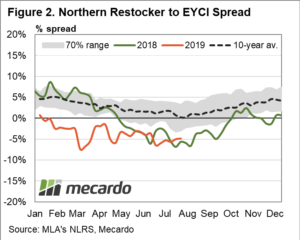 Indeed, as of last Friday the southern restocker spread to the EYCI sat at a premium of 0.5% prem compared to the five-year seasonal average for this time of the year at a premium of 2%. Not indicative of southern restockers becoming too enthusiastic about the market, but decidedly better than the 8.8% discount spread that they were paying at this time last season.
Indeed, as of last Friday the southern restocker spread to the EYCI sat at a premium of 0.5% prem compared to the five-year seasonal average for this time of the year at a premium of 2%. Not indicative of southern restockers becoming too enthusiastic about the market, but decidedly better than the 8.8% discount spread that they were paying at this time last season.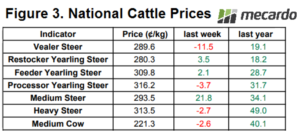 National cattle prices at the sale yard reflecting the tepid restocker interest of late with Restocker Yearling Steer prices lifting 3.5¢ on the week to close at 280.3¢/kg lwt. Medium steer the big winner on the week across the national price averages posting a 21.8¢ gain to finish at 293.5¢/kg lwt – Figure 3.
National cattle prices at the sale yard reflecting the tepid restocker interest of late with Restocker Yearling Steer prices lifting 3.5¢ on the week to close at 280.3¢/kg lwt. Medium steer the big winner on the week across the national price averages posting a 21.8¢ gain to finish at 293.5¢/kg lwt – Figure 3.

